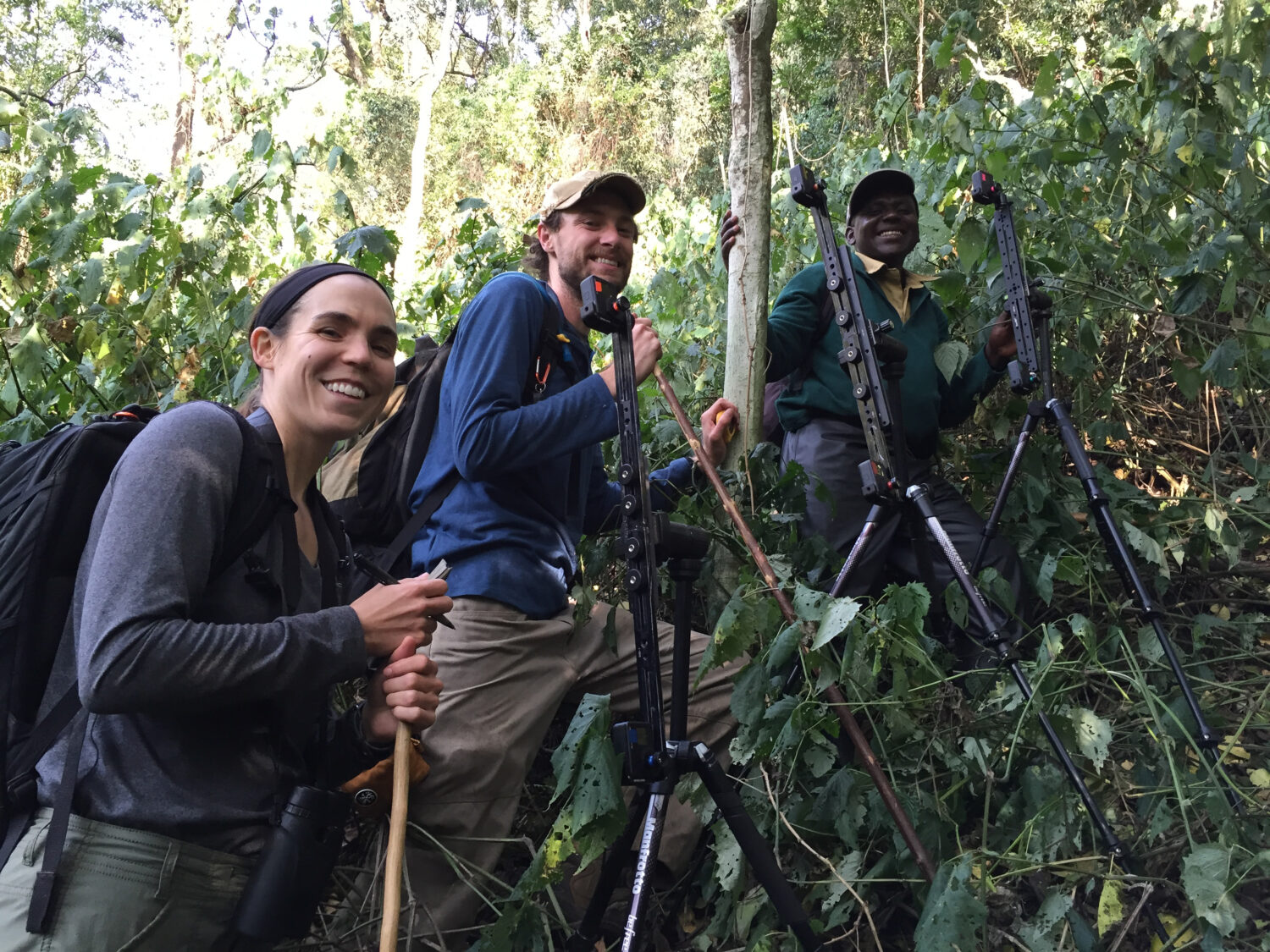From the Field
Kelly Ostrofsky is a postdoctoral teaching fellow at the New York Institute of Technology College of Osteopathic Medicine. She was awarded a Leakey Foundation Research Grant in our fall 2016 cycle for her project entitled “Comparing vertical climbing and suspension in wild African apes.”
Although originally trained as a functional morphologist interested in locomotor diversity in the early hominin fossil record, the lack of detailed information about extant ape locomotor diversity has led my dissertation research to take me into the living primate world. I have spent the last several months working at Bwindi Impenetrable National Park, Uganda, getting to know the mountain gorillas that live in the Ruhija sector of the forest. The monitoring of these mountain gorillas is a collaboration between researchers at the Department of Primatology, Max Planck Institute for Evolutionary Anthropology and the Institute of Tropical Forest Conservation and Uganda Wildlife Authority. Bwindi is not far from the better-known Virunga mountain gorillas that live in Volcanoes National Park, Rwanda, originally studied by Dian Fossey. It is estimated that until about five hundred years ago, these parks were part of one large continuous forest.
Most of what we know about mountain gorillas—at least the information about locomotion and posture that we morphologists use for functional anatomical interpretations—is based on the Virunga population. However, habitat differences between the two populations, particularly those related to fruit availability, are associated with differences in ranging patterns, daily travel distance, and fruit-eating. Since the Virunga mountain gorillas do not have fruit available in the higher-altitude, afro-montane forest, based on previous studies of this population, most researchers assume mountain gorillas rarely climb trees. Interpretations of skeletal differences among gorillas species and subspecies are often based on these conclusions.

However, Bwindi mountain gorillas do eat fruit, and they do climb trees. Since what we know about the locomotion and posture of mountain gorillas is currently based only on what is known about Virunga mountain gorillas, I am trying to add information about Bwindi mountain gorillas to the general consensus about what it is that mountain gorillas do, e.g., how much they climb. This means I have been lucky enough to spend many hours observing these amazing gorillas. A more detailed analysis of Bwindi mountain gorilla positional behavior will give us a more comprehensive foundation for interpreting skeletal variation in gorillas in terms of potential locomotor adaptations.

Part of this goal also involves looking at how the African apes move, e.g., how they climb, with video-based motion analysis, i.e., kinematics. Part of my time at Bwindi has involved traipsing around the forest with tripods and GoPro cameras to try and capture video of climbing and other locomotor behaviors, using multiple synchronized cameras for 3D kinematics. I also spent a few weeks with the chimpanzees at Gombe National Park, Tanzania to try and collect similar video data, to be able to compare gorilla and chimpanzee locomotor kinematics in the wild.

Since kinematic studies of primates are typically conducted in captive settings, it came as no surprise that bringing these methods to the field would have some additional challenges. The forest can be very dense and the terrain steep; finding a spot with a good view for multiple cameras and predicting where a chimpanzee or gorilla will move or climb is not always easy! Sometimes we can have the cameras set up in a perfect spot, waiting for a gorilla that seems to be ready to walk by, and at the last minute, decides to somersault and roll out of view. Adorable, if not so useful. Even so, with my original training as a morphologist, I never expected to be spending so much time with wild African apes, and I’ve been loving (almost) every minute of it. Falling branches, stinging bees and wasps, and nettles and thorns aside, it has been a unique experience getting to see how these animals move in their natural environment. With more quantitative characterizations of African ape locomotion, this research will shed light on locomotor diversity of these living taxa, and provide insight into the locomotor patterns of our early ancestors.


